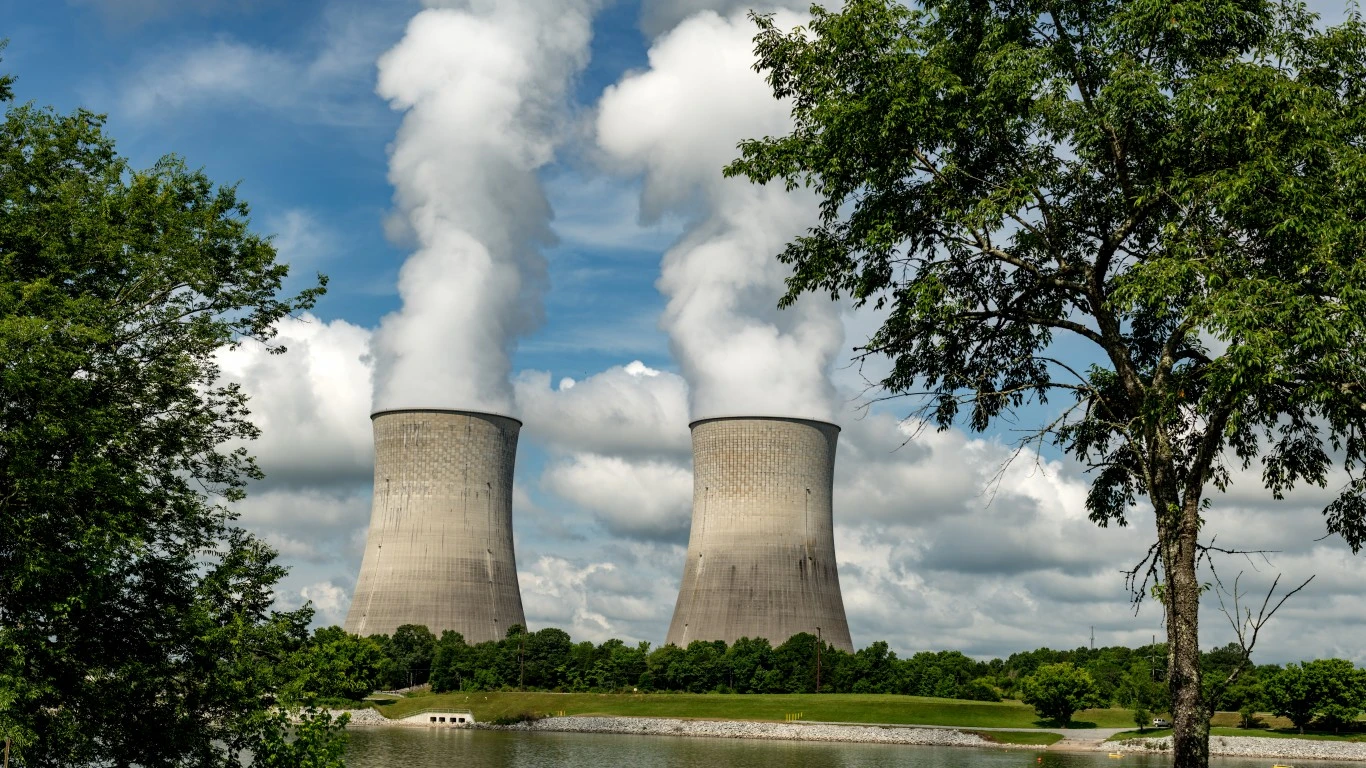
To address the ongoing climate change crisis, the Biden Administration set a target for the U.S. to have a net-zero emissions economy by 2050. Achieving this goal will require a carbon-pollution-free energy sector – and making the transition will not be easy. (Here is a look at the fastest growing and shrinking clean energy jobs).
Energy production is a hot-button political issue in the climate change era, and one of the more controversial topics is nuclear power. Nuclear power plants generate nuclear waste, which cannot be destroyed and requires long-term storage. Additionally, as accidents at Three Mile Island in 1979, the Chernobyl plant in Ukraine in 1986, and the Fukushima plant in Japan in 2011 have demonstrated, malfunctions can be catastrophic.
Still, nuclear plants offer carbon-free energy production, and, unlike some renewable energy sources, like wind and solar, nuclear plants provide reliable output. Nuclear plants are also powerful, and generate electricity about 8,000 times more efficiently than fossil-fuel-powered plants. Currently, there are some 93 active nuclear reactors in the United States, accounting for about 19% of the country’s total energy production. (Whether from nuclear plants or other sources, this is now much renewable energy your state produces.)
Using data from the U.S. Nuclear Regulatory Commission 24/7 Wall St. identified America’s most powerful nuclear power plants. Plants are ranked on the combined maximum output of their reactors.
Every nuclear power plant on this list has an estimated maximum power generation capacity of at least 1.97 gigawatts, and generates that with relatively little space. Wind farms, for example, require 360 times more land area than a nuclear power plant to produce the same amount of electricity.
Click here to see America’s biggest nuclear power plants
Click here to see our detailed methodology
Market forces have caused several large nuclear plants to close operations in recent years. One of the plants on this list, Diablo Canyon in California, is slated for retirement by the end of 2025.





